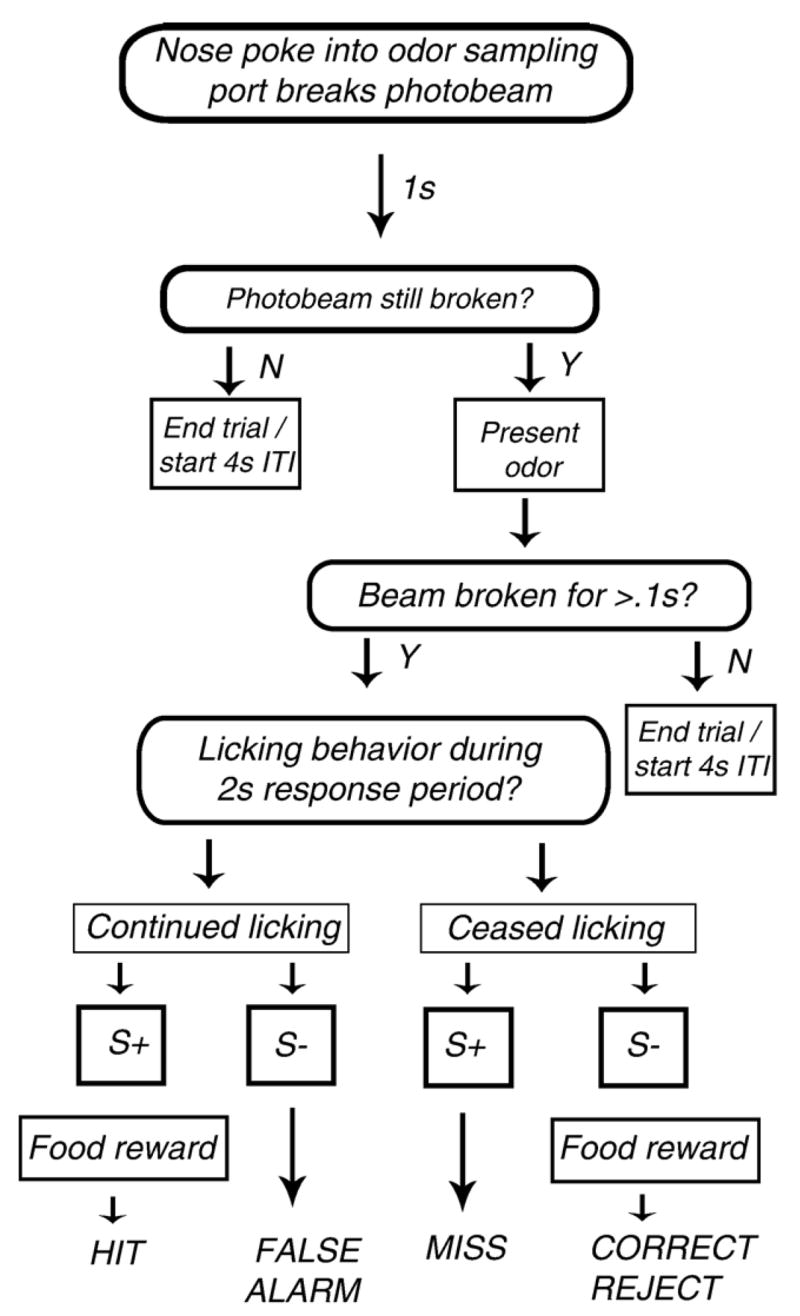Fig. 1.

Flow-chart outlining the procedure for assessing odor discrimination capacity using a liquid olfactometer. Briefly, the olfactometer presents an odor when the mouse breaks a photobeam with its snout. When the photobeam is broken, a stream of purified air displaces the odor headspace in the odor vials, sending this odor through a mixing manifold to pass by the nose of the animal as it licks from a reward spout. In this go, no-go discrimination paradigm, mice were rewarded with approximately 3 μl of Pediasure when they responded correctly by licking to the presentation of the S+ (hit) odor. If the animal did not lick for presentation of the S+ odor (miss) or did lick for presentations of the S− odor (false alarm), it was given a negative score. Alternatively, in cases when the animal did not lick for presentations of the S− odor (correct reject), the animal received a positive score. ITI: inter-trial interval.
